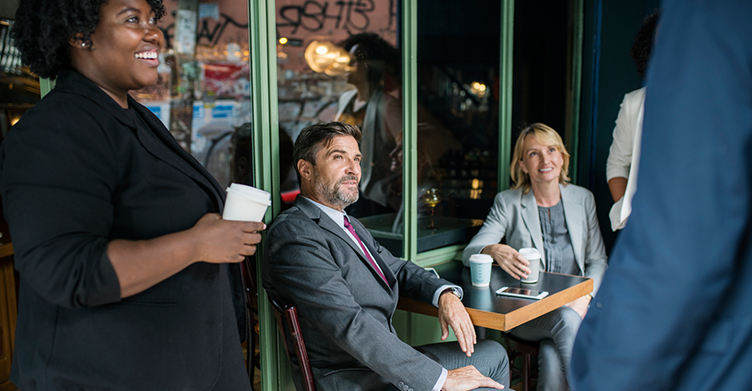Have you ever wanted to know how some of the world’s best communicators manage to be so persuasive?
People like Tony Robbins, Richard Branson, Donald Trump, Barack Obama, David Cameron, Tony Blair, Nicolas Sarkozy, Bill Clinton, Nelson Mandela and many others.
The Simple Answer Is They Use NON VERBAL COMMUNICATION So Well It Overrides Their Words.
They Communicate With Empathy, Pride and Confidence at Exactly the Right Moment and Their Behaviour Transcends What They Have To Say…
Your ability to use your own body language to emphasize your chosen words is paramount in all human interactions.
So, here are my top ten body language tips:
- Eye contact is one of the most important aspects of dealing with others. Maintaining good eye contact shows respect and interest in what they have to say. Here in the UK we tend to keep eye contact around 60-70% of the time. (However, there are wide cultural differences, so be careful in other countries). By doing this you won’t make other people feel self conscious, like they’ve got a bit of vegetable stuck between their teeth or a dew drop hanging from the nose. Instead, it will give them a feeling of comfort and genuine warmth in your company, any more eye contact than this and you can be too intense, any less and you give off a signal that you are lacking interest in them or their conversation.
- Posture is the next thing to master. Get your posture right and you’ll automatically start feeling better, as it makes you feel good almost instantly. Next time you notice you’re feeling a bit down, take a look at how you are standing or sitting. Chances are you’ll be slouched over with your shoulders drooping down and inward. This collapses the chest and inhibits good breathing, which in turn can help make you feel nervous or uncomfortable.
- Head position is a great one to play around with; with yourself and others. When you want to feel confident and self assured keep your head level both horizontally and vertically. You can also use this straight head position when you want to be authoritative and what you’re saying to be taken seriously. Conversely, when you want to be friendly and in the listening, receptive mode, tilt your head just a little to one side or other. You can shift the tilt from left to right at different points in the conversation.
- Arms give away the clues as to how open and receptive we are to everyone we meet and interact with, so keep your arms out to the side of your body or behind your back. This shows you are not scared to take on whatever comes your way and you meet things “full frontal”. In general terms the more outgoing you are as a person, the more you tend to use your arms with big movements. The quieter you are the less you move your arms away from your body. So, try to strike a natural balance and keep your arm movements midway. When you want to come across in the best possible light, crossing the arms is a no, no in front of others. Obviously if someone says something that gets your goat, then by all means show your disapproval by crossing them!
- Legs are the furthest point away from the brain, consequently they’re the hardest bits of our bodies to consciously control. They tend to move around a lot more than normal when we are nervous, stressed or being deceptive. So best to keep them as still as possible in most situations, especially at interviews or work meetings. Be careful too in the way you cross your legs. Do you cross at the knees, ankles or bring your leg up to rest on the knee of the other? This is more a question of comfort than anything else. Just be aware that the last position mentioned is known as the “Figure Four” and is generally perceived as the most defensive leg cross, especially if it happens as someone tells a you something that might be of a slightly dubious nature, or moments after. (As always, look for a sequence).
- Angle of the body in relation to others gives an indication of our attitudes and feelings towards them. We angle toward people we find attractive, friendly and interesting and angle ourselves away from those we don’t, it’s that simple! Angles includes leaning in or away from people, as we often just tilt from the pelvis and lean sideways to someone to share a bit of conversation. For example, we are not in complete control of our angle at the cinema because of the seating nor at a concert when we stand shoulder to shoulder and are packed in like sardines. In these situations we tend to lean over towards the other person.
- Hand gestures are so numerous it’s hard to give a brief guide but here goes. Palms slightly up and outward are seen as open and friendly. Palm down gestures are generally seen as dominant, emphasizing and possibly aggressive, especially when there is no movement or bending between the wrist and the forearm. This palm up, palm down is very important when it comes to handshaking and where appropriate we suggest you always offer a handshake upright and vertical, which should convey equality.
- Distance from others is crucial if you want to give off the right signals. Stand too close and you’ll be marked as “pushy” or “in your face”. Stand or sit too far away and you’ll be “keeping your distance” or “stand offish”. Neither are what we want, so observe if in a group situation how close are all the other people to each other. Also notice if you move closer to someone and they back away, you’re probably just a tiny bit too much in their personal space, their comfort zone. “You’ve overstepped the mark” and should pull back a little.
- Ears, yes your ears play a vital role in communication with others, even though in general terms most people can’t move them much, if at all. However, you’ve got two ears and only one mouth, so try to use them in that order. If you listen twice as much as you talk you come across as a good communicator who knows how to strike up a balanced a conversation without being me, me, me or the wallflower.
- Mouth movements can give away all sorts of clues. We purse our lips and sometimes twist them to the side when we’re thinking. Another occasion we might use this movement is to hold back an angry comment we don’t wish to reveal. Nevertheless, it will probably be spotted by other people and although they may not know the comment, they will get a feeling you were not too pleased.
Guest Post by Robert Phipps, author of the new book: Body Language: It’s What You Don’t Say That Matters.





